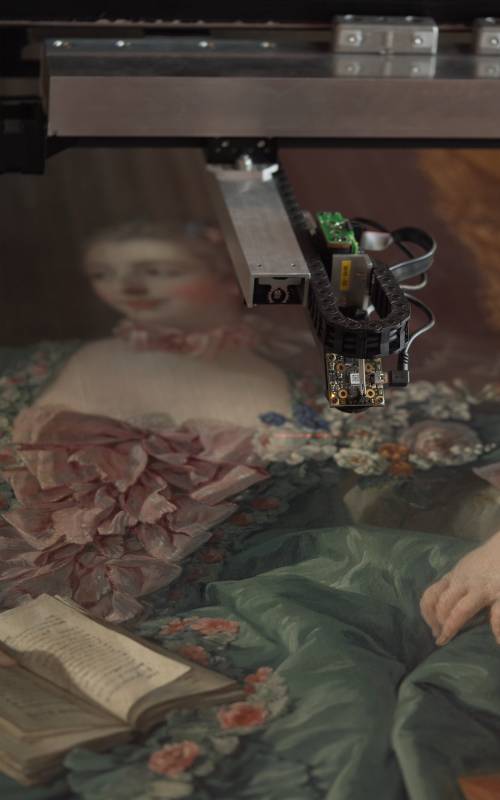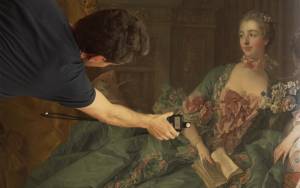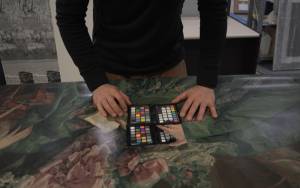
Art and technology: Madame de Pompadour in the Frame
The exhibition ‘Madame de Pompadour in the Frame’ explores how digital technology and facsimiles can enhance our understanding of art history.
2 and 3D scanning and recording plays an important role in the preservation and documentation of cultural heritage and works of art that might have lost their original context or be under threat. Factum Foundation are leaders in this field, and have worked with us to present a masterpiece as it was known by Baron Ferdinand in the 19th century.

A key figure in political and court circles, a renowned patron and major influence on the development of the French rococo style, Madame de Pompadour was captured most famously in a series of portraits by François Boucher, including one painted in 1756 at a time that her influence as Louis XV’s mistress had reached its height.
It was acquired by Baron Ferdinand de Rothschild, who was fascinated by ancien regime, in 1887 and hung in his London house, 143 Piccadilly. Either before, or shortly after he acquired it, the portrait was re-framed. When he died in 1898, the painting was bequeathed to his brother, Nathaniel, but for reasons which remain unclear, the impressive mid-18th century French frame remained at Waddesdon. The portrait was later sold by Nathaniel’s heirs, and is now on display at the Alte Pinakothek in Munich, on permanent loan from its owner, the HypoVereinsbank, Member of Unicredit. With the generous help of the Alte Pinakothek, Factum Foundation were able to create a scan and facsimile of the canvas, which we have put on display in the recently conserved frame, enabling visitors to see it as Baron Ferdinand would have known it.
Factum Foundation’s process
To create the facsimile, Factum began by scanning the large canvas (201 x 157 cm) in situ in the gallery. The process took over 20 hours using a 2 metre high Lucida 3D scanner capturing not only the painting’s surface but also the texture and profile of the canvas, including the brush strokes.

The colour was recorded using panoramic photography, a technique in which multiple high resolution photographs are taken from a fixed point, and overlapped. During post-processing a ‘mosaic’ was built up from the individual photographs to produce one very dense image file, with resolutions up to 900dpi.

The data recorded by the Lucida scanner was processed to produce ‘renders’ of the surface, creating 2D depth maps giving the painting a visible relief. The colour file and 2D render were then combined so that each individual 3D brush stroke corresponded to the correct colour.

To make the facsimile, Factum worked with Océ, A Canon company, to create a relief surface through printing pigment layer by layer. Liquid silicon was then poured over the print to create a mould of the layered surface. A ‘fibreskin’ that formed the base surface for the facsimile, was created through this process and glued to a canvas. The colour data was then printed on top of this textured surface using Factum’s flatbed printer to create a canvas that matched the original. The whole facsimile was then carefully inserted into Baron Ferdinand’s frame.
In addition to this, Factum also scanned and produced using the same method a facsimile of a smaller oil-sketch of Madame de Pompadour, also by Boucher and painted in 1755, which is also at Waddesdon, having come from a different Rothschild collection, that of Baron Edmond from the French branch of the family. The original and the facsimile hang side by side in the exhibition, allowing visitors to compare them directly – and see if they can tell the difference!
For a full description of the step by step process Factum Foundation used, please see their blog post >




